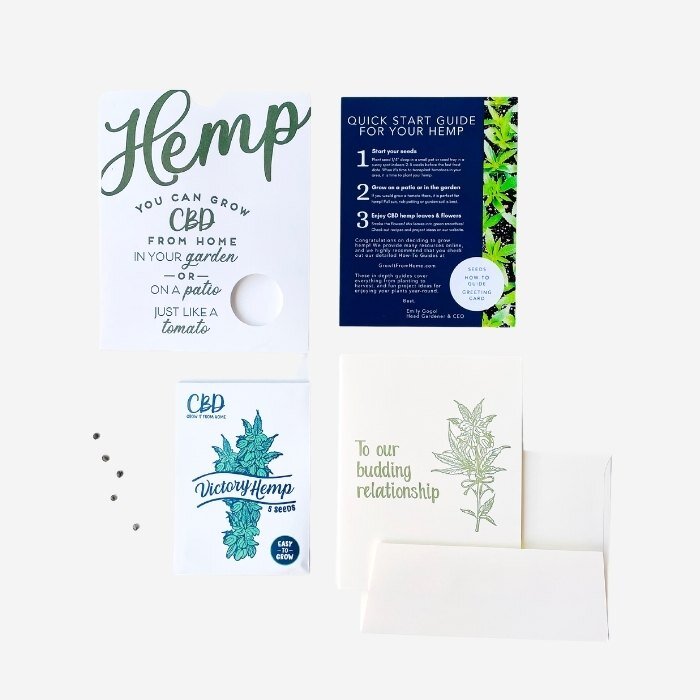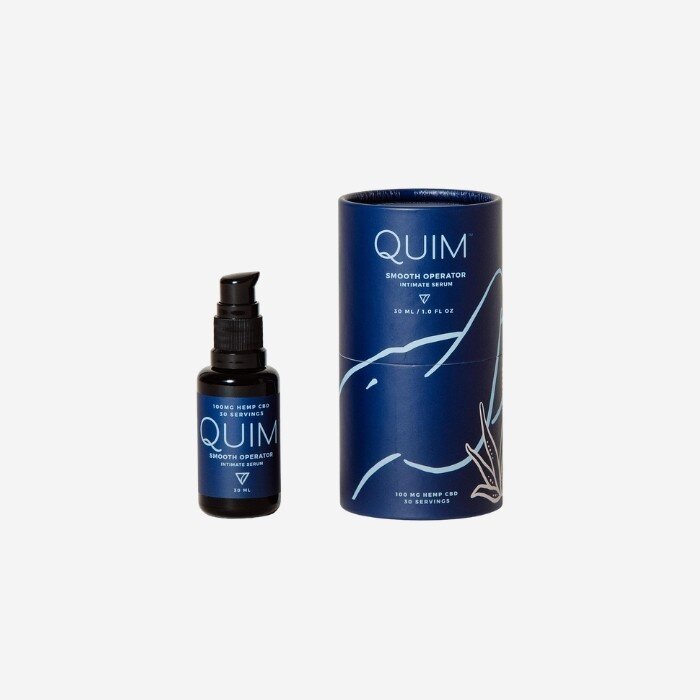The History of Hemp
An Excerpt from Blair Lauren Brown’s
New Book CBD: Self-Care Secrets
to Hemp-Derived Wellness
Though many people used cannabis-derived products every single day, the US imposed a tax on hemp cultivation in 1937 in the Marihuana Tax Act. This tax was imposed on anyone who sold or cultivated the cannabis plant, making it increasingly cost-prohibitive to be involved in the business.
Photo by Jennifer Skog
What changed government policy and, eventually, people’s minds about cannabis? In 1930, President Herbert Hoover appointed Harry J. Anslinger as the first director of the recently created Federal Bureau of Narcotics (now the Drug Enforcement Agency, or DEA). Formed in 1930 under the Department of the Treasury, the Federal Bureau of Narcotics was put in place to fight opium and heroin trafficking. Holding office for thirty years, Anslinger was one of the predominant figures in the stigmatization of cannabis. Under the guise of controlling addiction, he helped create an anti-cannabis campaign that also promoted racist and anti-immigrant views and shaped the language used to discuss cannabis.
Enter the term marijuana—the Latino-Spanish word for cannabis. Prior to the 1900s, cannabis was used to refer to the plant in news reports and medical journals, and smoking cannabis recreationally was a pastime reserved for the mainly white, social elite during parties and in other celebratory settings. The Mexican Revolution, which began in 1910 sent a wave of immigrants across the US–Mexico border, and they introduced the word marijuana to Americans. Anticannabis politicians as well as major media outlets began to popularize the usage of marijuana and negatively associate the drug with Mexican immigrants. Ultimately, by not using the word cannabis to refer to the plant, anti-cannabis factions could create a stigma around the plant that didn’t exist before.
Many newspapers published articles using the newly discovered word marijuana, describing how cannabis use led to violence and addiction, and portraying it as a drug of choice for many marginalized groups, from Mexican immigrants to African Americans to sex workers. The New York Times ran a headline in February 1925 that read “Kills Six in a Hospital. Mexican Crazed by Marihuana, Runs Amuck with Butcher Knife.” The Seattle Daily ran a sensational headline from March 16, 1913: “Evil Mexican Plants That Drive You Insane.” The article goes on to explain, “The revolution in Mexico has brought with it not only the ravages of war, but also the degradation of the social conditions of soldiers and prisoners. One of the latest forms of dissipation on the ranks of federals and rebels alike is the habit of smoking marihuana, a deadly native plant to Mexico.” In 1936, the propaganda film Reefer Madness was released. It depicted fictionalized caricatures of drug dealers luring children to the dark side of “reefer” smoking culture, perpetuating every stereotype of cannabis portrayed in the press. Originally produced and paid for by a church group called Tell Your Children, it soon stigmatized cannabis use and became a weapon in Anslinger’s campaign to create more-uniform drug enforcement policies across the United States.
“Under the guise of controlling addiction, [Harry J. Anslinger of the newly formed DEA] helped create an anti-cannabis campaign that also promoted racist and anti-immigrant views and shaped the language used to discuss cannabis.”
As the media spread stereotypes and tabloid-style headlines about the “marijuana menace,” policymakers and appointed officials shared similar racist sentiments that supported the sensationalized media reports.
Anslinger proclaimed before Congress while presenting the Marihuana Tax Act of 1937, “Marijuana is the most violence-causing drug in the history of mankind. . . Most marijuana smokers are Negroes, Hispanics, Filipinos, and entertainers. Their satanic music, jazz and swing, result from marijuana usage.” He later wrote, “Reefer makes darkies think they’re as good as white men. . . The primary reason to outlaw marijuana is its effect on the degenerate races.”
The Marihuana Tax Act of 1937 laid the groundwork for the prohibition of cannabis in the US on a federal level by effectively halting its cultivation, even as a 1938 issue of Popular Mechanics hailed hemp as the “new billion-dollar crop” due to the introduction of new production and harvesting equipment. Just as the plant was starting to be recognized for its great value to the nation, it was also being cut down because of its unsavory reputation.
It is possible that the rise of hemp may have posed a threat to chemical and agricultural industries, so some corporations may have had interests in controlling or stifling hemp production. For example, DuPont, the largest chemical manufacturer in the US, had patented synthetic fiber production in 1938, creating an alternative to hemp textiles, which had made up 80% of all apparel until the 1920s. Hearst, the largest publishing company in the US at the time, maintained significant holdings in cotton and lumber, hemp’s competitors in paper production.
The public perception of cannabis had effectively been altered and it was now seen as a dangerous, addictive drug. This influenced policies and laws on the state, federal, and even international level. By the 1930s, many states in the US had banned cannabis, some doing so by classifying cannabis alongside already regulated narcotics. Beginning in 1961, a total of 155 countries signed the first international treaty prohibiting the production and supply of cannabis along with other hard drugs, like cocaine and heroin, with some exceptions for cannabis used for medicinal purposes.
In 1970, under US President Richard Nixon, Congress passed the Controlled Substances Act, creating a standardized classification system that categorized drugs based on their potential for abuse. These classifications are referred to as “schedules” with Schedule I being the most addictive and dangerous and Schedule V being the least. Cannabis was labeled a Schedule I drug, along with cocaine, heroin, and morphine. After the passage of the Controlled Substances Act, it officially no longer recognized industrial hemp and medicinal “marijuana” as two separate varieties of the cannabis plant.
“Anslinger proclaimed before Congress while presenting the Marihuana Tax Act of 1937, “Marijuana is the most violence-causing drug in the history of mankind. . . Most marijuana smokers are Negroes, Hispanics, Filipinos, and entertainers. Their satanic music, jazz and swing, result from marijuana usage.”
The next year, President Richard Nixon began his all-out “war on drugs.” Despite unanimous recommendations by a drug enforcement commission in 1972, Nixon refused to decriminalize possession of cannabis for personal use. With the creation of the Drug Enforcement Administration (DEA) in 1973, the US government had a streamlined process for generating and enforcing policies related to drug laws, and funding for drug-fighting campaigns increased. Thousands were imprisoned for nonviolent drug offenses, and many drug enforcement efforts disproportionately affected people of color in the following decades.
In the 1980s, President Ronald Regan continued to take a harsh stance on drug enforcement. With the implementation of new mandatory minimum sentencing laws for the use and possession of several drugs, including cannabis, incarceration rates soared further. Meanwhile, First Lady Nancy Reagan began her “Just Say No” campaign to teach children about the dangers of drugs. In 1984, despite the lack of substantial or clinical evidence, cannabis was presented as a “gateway” drug that led to the eventual abuse of narcotics.
The drug enforcement policies of the 1970s and beyond have been seen as a response to the anti-establishment sentiments and rising political dissent in the 1960s. John Ehrlichman, a domestic policy chief during the Nixon administration, later described the war on drugs as a campaign motivated by these factors. He said, “You want to know what this was really all about? The Nixon campaign in 1968, and the Nixon White House after that, had two enemies: the antiwar left and Black people. . . We knew we couldn’t make it illegal to be either against the war or Black, but by getting the public to associate the hippies with marijuana and Blacks with heroin, and then criminalizing both heavily, we could disrupt those communities. We could arrest their leaders, raid their homes, break up their meetings, and vilify them night after night on the evening news. Did we know we were lying about the drugs? Of course, we did.” The policies that came out of the war on drugs left a destructive legacy, harming many communities, hampering research on medical cannabis, and severely restricting access to a plant that has been used for centuries.
Since the Food and Drug Administration (FDA) does not regulate CBD products, do not purchase CBD oil that is not third-party lab tested and can share a Certificate of Analysis (COA) for the exact product you are purchasing.
While the U.S. waits for the FDA to standardize regulations for hemp CBD, the state of New York takes initiative by setting standards and a regulatory framework for the hemp industry. The new law signed in December 2019 will require the hemp industry to test and label their products as Dietary Supplements to protect consumers.
Click the button below For a list of MJ Lifestyle Approved CBD Brands.
ABOUT THE AUTHOR
Blair Lauren Brown, Co-founder of Poplar, offers a captivating introduction to CBD—what it is, how it can improve your health, and how to use it for personal wellness.
Get Blair’s Ritual Wellness CBD—Self-Care Secrets to Hemp-Derived Wellness Book on Amazon >
SPARK THE CONVERSATION
Know someone who could benefit from this article? Share it with them:
















![ISSUE IV: IN HER POWER [Print Issue]](https://images.squarespace-cdn.com/content/v1/59d67df7f43b55d3bba071a1/1625433536206-OGB20J3WYG5IA75VVZJU/MJ+Lifetyle+Issue+4.jpg)



















